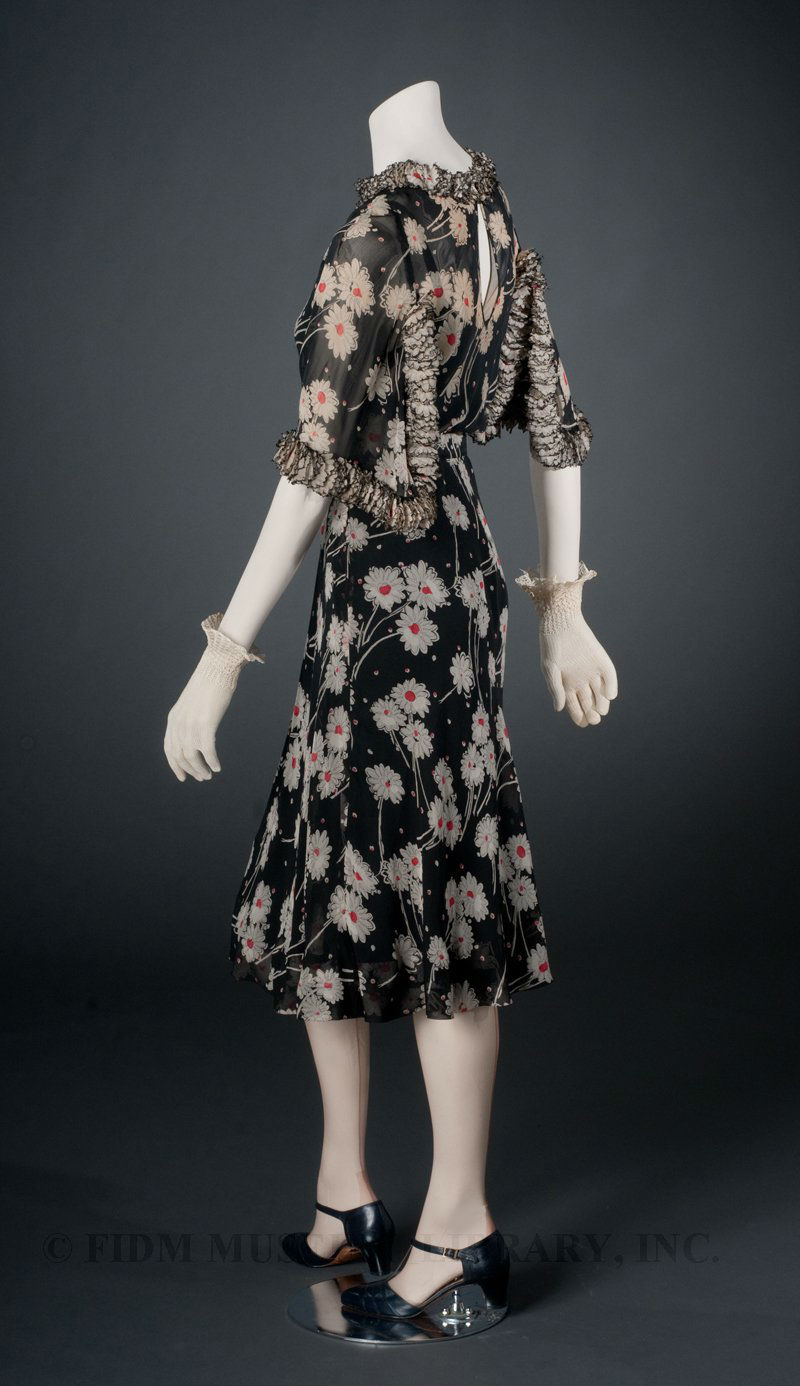Chanel day dress, c. 1937
Gabrielle "Coco" Chanel's (1883-1971) reputation is staked primarily on her exploration of menswear-inspired suits and her promotion of the understated little black dress. Though these creations are an important part of her aesthetic, her designs didn't always exude a strict less-is-more philosophy. Many of Chanel's evening wear designs, particularly during the 1920s and 1930s, glittered with embellishment. She also designed feminine, romantic day wear like the c. 1937 afternoon dress pictured here.
 Afternoon dress
Afternoon dress
Gabrielle "Coco" Chanel
c. 1937
Gift of The Fashion Institute of Design & Merchandising
79.25.5
The softly feminine silhouette seen here demonstrates the 1930s turn away from the streamlined 1920s silhouette. Instead of unshaped sheath dresses that disguised the body, 1930s fashion focused on showcasing the female form with form-fitting, bias-cut dresses and tailored suits that emphasized the waist. Chanel's chiffon afternoon dress features a seam at the natural waist, and a self-fabric belt for emphasis. The flowing skirt is cut on the bias, and would float gracefully around the wearer's legs when walking. Because of its mid-calf length, we know this dress was intended for day wear.
Despite her reputation for a pared-down aesthetic, Chanel was no stranger to flowers and frou-frou. Throughout the 1930s, flowers were an extremely popular decorative device. In 1935 it was reported that, "all Paris today is wearing flowers, both real and artificial."1 Floral patterns were a favorite for day and evening dresses, as dimensional decoration on garments and accessories and as decoration in the hair. Chanel used flowers (often a camellia) as soft accent on garments, as a motif in her jewelry designs, and as textile pattern. In this afternoon dress, Chanel used self-fabric, cut-out flowers to embellish the neckline and unusual split sleeves. Individual daisies were carefully cut from a length of the filmy chiffon, stacked, and sewn around the scooped neckline and sleeves. Chanel's use of this inventive, time-consuming embellishment elevates an otherwise straightforward afternoon dress to the level of haute couture.
1 "Parisians Vie for Originality in Floral Wear." The Washington Post. 5 July 1935: 14.